【IN FOCUS】The World Earth Day: Earth4All
The annual celebration of World Earth Day, which falls on April 23rd this year, has adopted the theme "Earth4All" to highlight the urgent need for sustainable development in the face of rapid global urbanization. As urban areas expand, environmental problems are becoming increasingly severe, presenting daunting challenges such as climate change, environmental pollution, biodiversity loss, resource depletion, and other pressing issues. In this week's IN FOCUS, we will showcase five cities' pioneering initiatives aimed at tackling these challenges by promoting innovative measures to mitigate climate change, conserve green spaces, enhance biodiversity, reduce carbon emissions, and optimize resource efficiency.
Copenhagen, Denmark: Copenhagen Climate Resilient Neighborhood
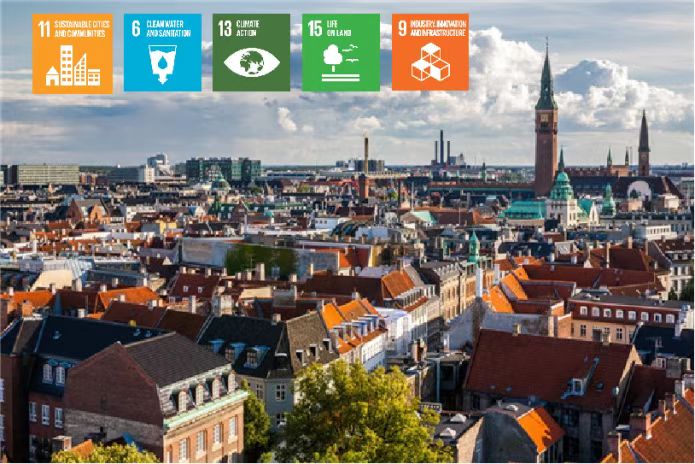 Copenhagen has been faced with multiple times of heavy rainfalls, which are climate hazards that can’t be ignored. The downpour in 2011 even caused a loss of up to one billion USD while their sewerage systems were too old to withstand the onslaught of heavy rainfalls. Under such situations, Copenhagen began to adopt climate-resilient programs to respond to the growing frequency of extreme climate events.
Copenhagen has been faced with multiple times of heavy rainfalls, which are climate hazards that can’t be ignored. The downpour in 2011 even caused a loss of up to one billion USD while their sewerage systems were too old to withstand the onslaught of heavy rainfalls. Under such situations, Copenhagen began to adopt climate-resilient programs to respond to the growing frequency of extreme climate events.
After that, Copenhagen launched street and city upgrading programs, modifying the severely damaged streets, squares, and green spaces. In 2010, St. Kjelds Neighborhood in Østerbro became the first neighborhood to be adapted. In the following two years, the Copenhagen Climate Adaptation Plan and the Cloudburst Management Plan have been developed and issued by the Copenhagen City Council as a strategic framework and concrete guide for neighborhood adaptation. In 2019, the Bryggervangen neighborhood and Skt. Kjelds Plads, which were renovated, are the “green heart” and typical results of climate-resilient neighborhoods, with a harmonious combination of greenery, traffic roads, and recreational spaces for residents.
The program has not only solved the problem of serious waterlogging on the streets during heavy rainfalls, enlarged green space, improved the city’s rainwater utilization, and improved the environment and microclimate of the neighborhoods, but also increased residents’ sense of participation and belonging by actively encouraging and guiding them to participate in the city’s adaptation projects. Most importantly, Copenhagen’s climate-resilient neighborhoods demonstrate an innovative model of urban governance and a vivid initiative, which is a good example of a sponge city, providing an important reference for other urban construction and adaptation projects.
Learn more: http://www.guangzhouaward.org/a/722.html?lang=en
Saint Louis Departmental Council, Senegal: Inter-municipal Approach for the Safeguard and Enhancement of the Mangrove by the Local Authorities
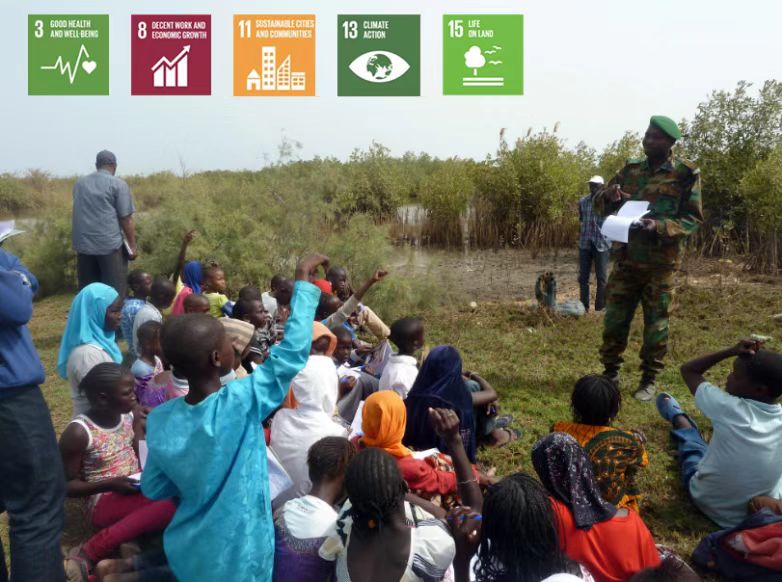
Saint Louis, the northernmost point in West Africa, has a 1000-hectare mangrove belt. Due to climate change and human activities, the mangrove belt is shrinking at a rate of 9 hectares per year. To save mangroves from extinction, the local government developed an innovative initiative on environmental governance, which integrated the restoration of mangrove ecosystems across three municipalities.
With the cooperation and participation of local authorities, technical services, local private enterprises, civil society organizations, and community organizations, people began to actively participate in the restoration and protection of mangrove forests. During the process, the youngsters and women were also supported by project funds and gained access to employment opportunities and wealth. The project has also established a regional training system in which a total of 19 schools have launched an environmental education project to raise environmental awareness. During the nine years of intervention, the initiative is under sustainable, unified, and well-planned management. The local forestry department estimates that more than 50 hectares of mangrove have been regenerated, which is equivalent to a sequestration rate of 350 tons of carbon annually.
Learn more: http://www.guangzhouaward.org/a/1326.html?lang=en
Curridabat, Costa Rica: Curridabat Ciudad Dulce
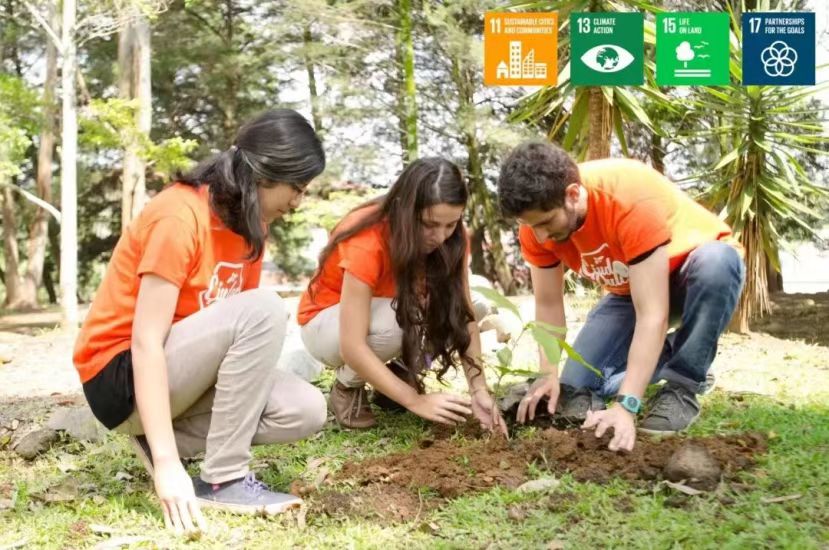 Located in the central valley of Costa Rica, Curridabat favors the development of biodiversity, with several important biological corridors around it. The growth of cities and population has intensified the confrontation between the city and nature, reducing the interactions between citizens and other biological species, which has deteriorated the livability of their habitat and has been against the consolidation of collective morality.
Located in the central valley of Costa Rica, Curridabat favors the development of biodiversity, with several important biological corridors around it. The growth of cities and population has intensified the confrontation between the city and nature, reducing the interactions between citizens and other biological species, which has deteriorated the livability of their habitat and has been against the consolidation of collective morality.
In order to create a biologically diverse, comfortable, clean, peaceful and more orderly urban environment, the city has taken various measures: reintroducing multiple plant species that have been replaced by a single species, promoting the importance of interacting in harmony with nature, enhancing community capacity for micro-land management, integrating urban planning and design into community culture, and adapting infrastructure to biodiversity. Among them, the Sweet City project installs or consolidates natural conservation as an urban activity, specifically through the increase in the number and variety of pollinators and providing a favorable environment for them.
This initiative has not only brought beauty to the people of Curridabat, but also created better "performing conditions" for pollination and thus a more bio-diverse, comfortable, clean, peaceful, and colorful urban environment.
Learn more: http://www.guangzhouaward.org/a/744.html?lang=en
Gwangju, Republic of Korea: Gwangju Carbon Bank GHG Emission Reduction Program
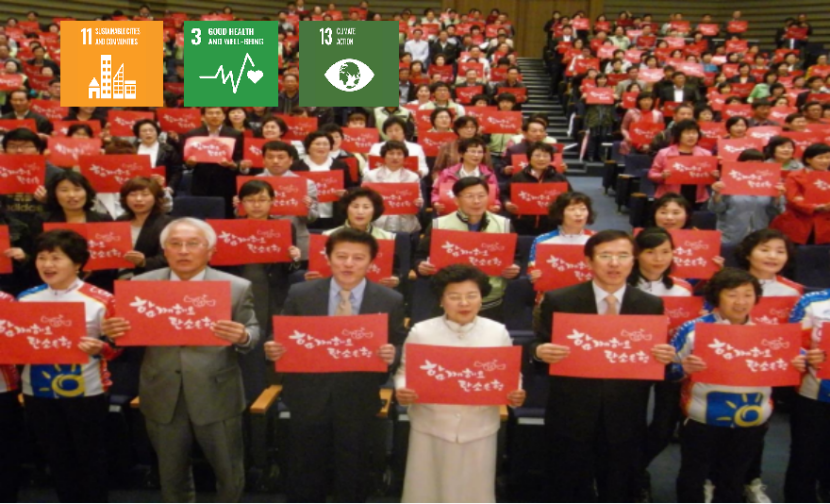
In Gwangju, non-industrial sectors including households and businesses contribute up to 47% of greenhouse gas emissions. In order to improve the awareness of 1,500,000 citizens and guide them to take an active part in GHGs emission reduction activities, on April 10, 2008, Gwangju City signed the Agreement on Model City of Climate Change with the Ministry of Environment and strategically adopted the Carbon Bank System.
Gwangju’s Carbon Bank system is a system in which the amount of carbon dioxide reduced by households actively saving energy (electricity, gas, water pipes) is converted into credits and paid to participate households. After the implementation of the system, people can reduce their utility bills by saving energy and at the same time receive a credit discount and contribute to the global environment.
The program effectively reduces household greenhouse gas emissions, enabling Gwangju to become a "carbon-neutral city" and improve its ability to adapt to climate change. The project requires different organizations to work together to promote urban development, which strengthens their cooperation. In addition, the circulation of carbon points has undoubtedly stimulated local economic development. The system has laid a foundation for a national carbon point system in Korea, and widely replicated by local governments around the world.
Learn more: http://www.guangzhouaward.org/a/706.html?lang=en
Austin, United States: the Austin Materials Marketplace
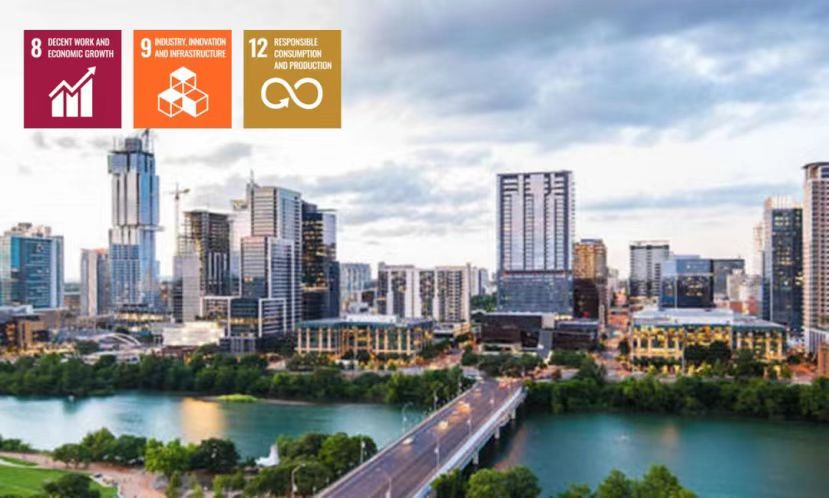 The City of Austin’s ambition to reach zero waste by 2040 has generated several initiatives, including the creation of the Austin Materials Marketplace, an online materials exchange platform. Aligning with circular economy principles, the platform’s goal is to maximize their value of surplus materials and products and turn waste into treasure. The Marketplace welcomes companies from different production chains to enter and exchange construction waste, plastics, organics and packaging materials, so that materials can be exchanged more effectively. By doing so, not only can waste management expenditure for the city be reduced, but also the means for local businesses to advertise and bid for surpluses can be provided, thereby local businesses can benefit from cost savings or even create additional income.
The City of Austin’s ambition to reach zero waste by 2040 has generated several initiatives, including the creation of the Austin Materials Marketplace, an online materials exchange platform. Aligning with circular economy principles, the platform’s goal is to maximize their value of surplus materials and products and turn waste into treasure. The Marketplace welcomes companies from different production chains to enter and exchange construction waste, plastics, organics and packaging materials, so that materials can be exchanged more effectively. By doing so, not only can waste management expenditure for the city be reduced, but also the means for local businesses to advertise and bid for surpluses can be provided, thereby local businesses can benefit from cost savings or even create additional income.
This project has reduced the expenditure of municipal waste management and has provided a way for local enterprises to buy and sell surplus materials in a greatly money-saving way. By the end of 2018, more than 400 tons of materials have been exchanged and carbon dioxide emissions have been reduced by more than 950 million tons.
Learn more:
https://www.ellenmacarthurfoundation.org/assets/downloads/Austin_-Case-Study_Mar19.pdf


 In Focus | World Cities Day: People-Centred Smart Cities
In Focus | World Cities Day: People-Centred Smart Cities City Stories | Fostering community resilience: A lifeline for the Central African Republic
City Stories | Fostering community resilience: A lifeline for the Central African Republic In Focus | Innovative Education, Empowering Futures
In Focus | Innovative Education, Empowering Futures




















 Tel: +86 020 3780 4434
Tel: +86 020 3780 4434 Email: info@guangzhouaward.org
Email: info@guangzhouaward.org Adress: Unit 01-7, 28th Floor, No. 7, Chunrong 3rd Road, Tianhe District, Guangzhou, Guangdong, 510000, PRC
Adress: Unit 01-7, 28th Floor, No. 7, Chunrong 3rd Road, Tianhe District, Guangzhou, Guangdong, 510000, PRC




